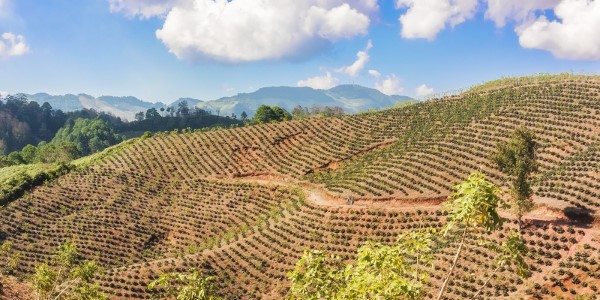Description
Azacualpa is a community located in the outskirts of Tegucigalpa, the capital city of Honduras, with a population of approximately 1,600 people. Their main economic activity is horticulture production to be sold in Tegucigalpa; and to a lesser extent, basic grains for their own consumption. Some of the producers belong to the small horticultural community enterprise ‘Vegetables producers from Izopo and Azacualpa- PROVIASA’, created with support of the Rural Enterprise Development Foundation (FUNDER) in 2007.
Azacualpa has a favourable micro-climate for horticultural production, despite being located in the Dry Corridor. The dry season runs from December to April - 246 days without rain - and the rainy season runs from May to November, showing increasing variability in rainfall patterns.
Action taken
At national level, the Presidential Commission for Coordination of the Water Sector in Honduras (CONAGUAH) was created in 2015 to promote activities for drought-stricken communities, coordinated by the Minister of Agriculture and Livestock (SAG). Also, the Governmental Drought Action Plan for Food Security, provides food assistance to 161,403 families in municipalities affected by severe and moderate drought. Within this framework, the Irrigation and Drainage Directorate of SAG, through its National Water Harvesting Project, developed a strategy to build 27 reservoirs to address the problem.
The reservoirs range from 3,100 to 67,000 m3 in volume, and from 2.75 to 8 meters in depth, with the potential to provide year-round irrigation to 128 hectares. The project included capacity building and support for technical and organisational aspects for operation, maintenance and sustainability; including an irrigation system maintenance program, as well as the start-up of the Irrigation Districts.
The Irrigation Districts establish a need-based irrigation schedule to ensure all users have equal access to water; and have a legal structure recognised by national authorities to exploit the reservoirs. Reservoirs were built following technical design criteria that would ensure the best possible outcome from the intervention. Only 11% of reservoirs had to be waterproofed due to the type of soil. All other reservoirs are fully functional. The project prompted a local private initiative to build eight additional reservoirs, expanding the area under irrigation to a total of 183 hectares.
Lessons learnt
- It is important to frame every action within national policy, for decision making effectiveness, and to have timely communication systems that provide information from the field to public offices. Also, reservoirs could be part of a long-term strategic public policy in support of organised response to droughts, as opposed to a reactive approach; which increases costs.
- Achievements are largely due to the holistic approach and comprehensive response undertaken by institutions (national authorities, NGOs, market actors and financial system), and the willingness of the population involved to become organised into irrigation districts, which proved to be a key factor.
- Land owners must be willing to legally cede the land for reservoirs via agreements subscribed among parties before any construction work is undertaken.
- A participatory approach that includes existing community based organisations in every stage of the project is necessary, in order to avoid conducting activities that, although necessary, may not be deemed important by the population, as this may negatively affect sustainability, and to ensure producers support compliance thereof.
Photo: Coffee plantation in the highlands of Honduras, by Marek Poplawski/mostphotos.com

